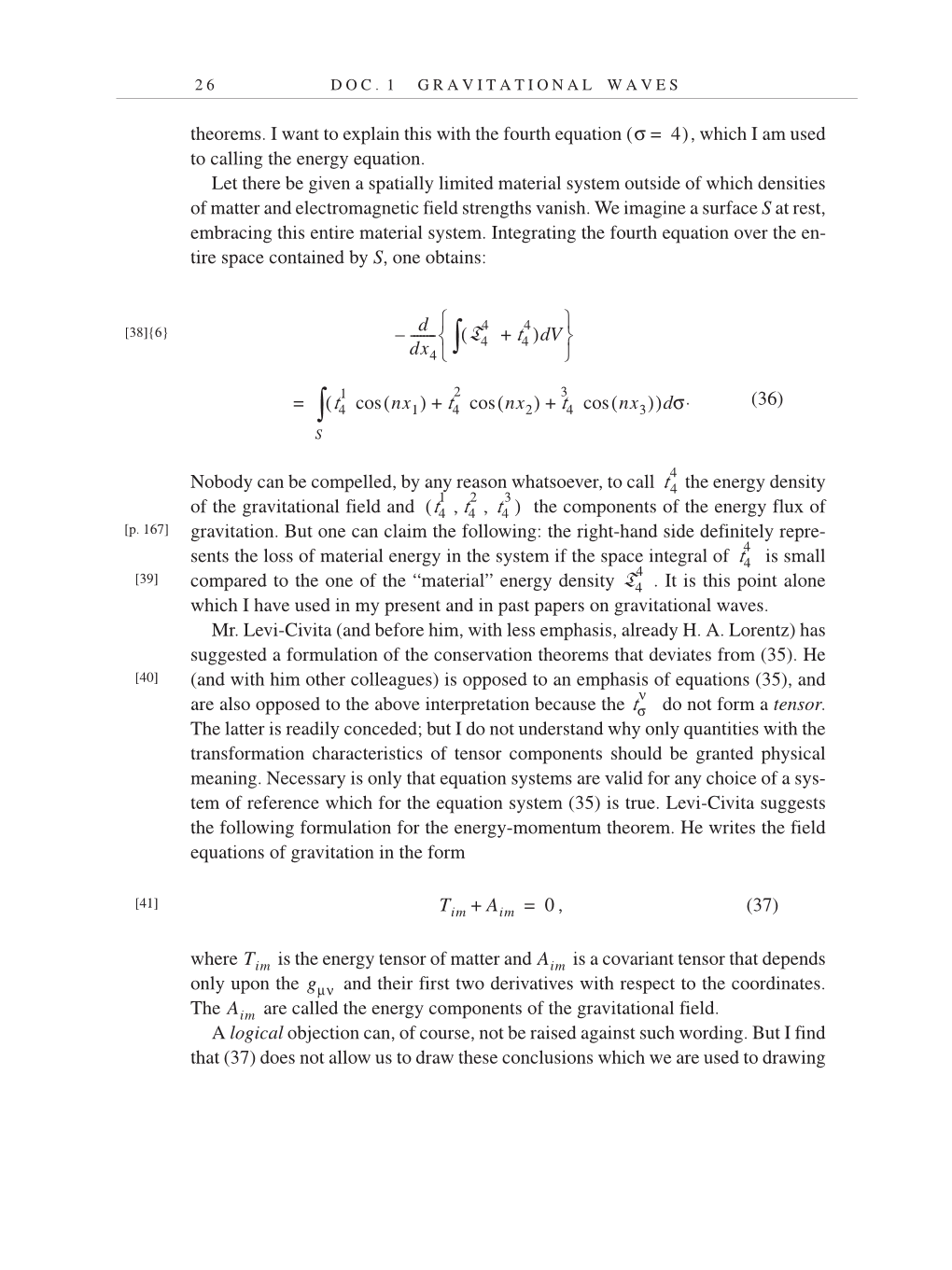2 6 D O C . 1 G R A V I T A T I O N A L W A V E S
theorems. I want to explain this with the fourth equation which I am used
to calling the energy equation.
Let there be given a spatially limited material system outside of which densities
of matter and electromagnetic field strengths vanish. We imagine a surface S at rest,
embracing this entire material system. Integrating the fourth equation over the en-
tire space contained by S, one obtains:
Nobody can be compelled, by any reason whatsoever, to call the energy density
of the gravitational field and the components of the energy flux of
gravitation. But one can claim the following: the right-hand side definitely repre-
sents the loss of material energy in the system if the space integral of is small
compared to the one of the “material” energy density . It is this point alone
which I have used in my present and in past papers on gravitational waves.
Mr. Levi-Civita (and before him, with less emphasis, already H. A. Lorentz) has
suggested a formulation of the conservation theorems that deviates from (35). He
(and with him other colleagues) is opposed to an emphasis of equations (35), and
are also opposed to the above interpretation because the do not form a tensor.
The latter is readily conceded; but I do not understand why only quantities with the
transformation characteristics of tensor components should be granted physical
meaning. Necessary is only that equation systems are valid for any choice of a sys-
tem of reference which for the equation system (35) is true. Levi-Civita suggests
the following formulation for the energy-momentum theorem. He writes the field
equations of gravitation in the form
, (37)
where is the energy tensor of matter and is a covariant tensor that depends
only upon the and their first two derivatives with respect to the coordinates.
The are called the energy components of the gravitational field.
A logical objection can, of course, not be raised against such wording. But I find
that (37) does not allow us to draw these conclusions which we are used to drawing
σ 4), = (
d-⎨
dx4⎩
------- – T4
4
t4
4
+ )dV
∫(
⎭
⎬
⎧ ⎫
t4
1
nx1) cos( t4
2
nx2) cos( t4
3
nx3))(36).σd
cos( + +
S
∫(
=
[38]{6}
t
4
4
t4
1
t4
2
t4
3
, , ( )
[p. 167]
t4
4
T4
4
[39]
[40]
tσ
ν
Tim Aim + 0 =
[41]
Tim Aim
gμν
Aim
